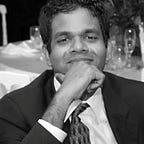How far away is Kandy?
A brief history of Sri Lankan highways
If I ask you, “How far away is Kandy”? How will you answer? “About 100kms”? Or “Could be 5 hours or more. Depending on traffic”?
Someone once told me,
“The mission of a transport system is to shrink time. The more a transport system shrinks more time for more people, the better it is”.
While this might sound science-fictionesque, it is very true. The slower a journey takes, the further away from the destination.
In this article, I not only attempt to answer the question “How far away is Kandy?”, but also analyse how the answer has evolved with the evolution of our highway system.
The Space Age
Our first A-class highway, the A1 highway from Colombo to Kandy, was constructed in 1820. In those early days, vehicles were few and far between, and, in comparison, road-space was relatively abundant.
The network grew organically to cover most of the country. Today, we have nearly 4,000kms of A-grade highways, and many more miles of AB, AC and B grade highways as well. Throughout most of this growth, road-space tended to grow faster than the number of vehicles, and hence, our roads continued to be space abundant.
In the ’80s and ’90 with a more liberal economy and faster development, the number of vehicles began to increase. However, this increase was not significant enough to tax the road network.
In this space, abundant age, “traffic” was rare, and there was not a significant difference between the best and worse case travel times for any particular route. The drive to Kandy from Colombo Fort usually lasted about 2.5 hours.
The Traffic Age
The Space Age began to fall apart in the 2000s, and drastically in the 2010s. A combination of cheaper cars, more disposable income, and incentives like vehicle permits resulted in an exponential rise in the number of vehicles. The ratio of road space to vehicles plummeted.
The driving time to Kandy from Colombo Fort doubled to over 5 hours in high traffic. The driving time to Galle to nearly 4 hours. Within a few years, the shape of the country changed from one determined by space, to one defined by time.
The Express Age
The E01 or Southern Expressway was opened in 2011. Sri Lanka’s first-ever E-class highway. Journey time to Galle and many parts of the Southern Province was reduced significantly.
The E04 or Central Expressway from Kadawatha to Katugastota via Kurunegala is also under construction. When complete, the journey time from Colombo Fort to Kandy should be about 3 hours at worst.
The Metro Age
Currently, travel time to Galle from Colombo Fort is a little over 2 hours. Nearly half that consists of reaching the E01, either at Kottawa or Hokandara. Similarly, travel from Colombo Fort to Kadawatha (entrance to the E04), could last an hour. These within-Colombo-travle times are likely to increase.
Given the density of population and buildings, it is not feasible for an Expressway to reach Colombo Fort. Hence, reducing travel time further (or preventing it from increasing) cannot be solely accomplished with Expressways. A different solution is needed.
More developed cities solve this problem with a metro system. Everything from underground systems to mono-rails. If Colombo has a metro system with an average speed of 45km/h, travel time to Kottawa or Kadawatha would be halved.
In this map, I simulate the effect of having a metro parallel to the A1, A2, A3 and A4 highways, within greater Colombo.
The High-Speed Age
Expressways enable fast travel through areas of low population density. Metros do the same for high population density areas. Once these goals have been accomplished, the next logical step in time, shrinking is High-Speed Trains.
The speed limit for most motor vehicles is about 100km/h. But it is quite normal for trains to travel at 250km/h or more.
For example, if we have a 250km/h train from Colombo Fort to Kandy, travel time to Kandy would be less than 30min. Similar to Nawala.
Can we do it?
Sri Lanka’s highway system has made great strides since the A1 was opened. And we are well on our way in the Express Age. But can we make it to the Metro Age and the High-Speed Age?
“The mission of a transport system is to shrink time. The more a transport system shrinks more time for more people, the better it is”, was told to me by a non-executive director of the UK’s national rail. Oddly, this was not at a seminar or conference. It was on a second class train compartment from London Kings Cross to Cambridge.
The Metro Age and the High-Speed Age will have significant technology and economic challenges. But the most critical challenge would be one of people. Do we have the people, and more importantly leaders who can make this happen?
People who are proud to travel second class, and talk about the future with hope and sincerity?
Data Source: Google Maps API. Travel times are for weekdays, during high traffic with “pessimistic” estimates.
